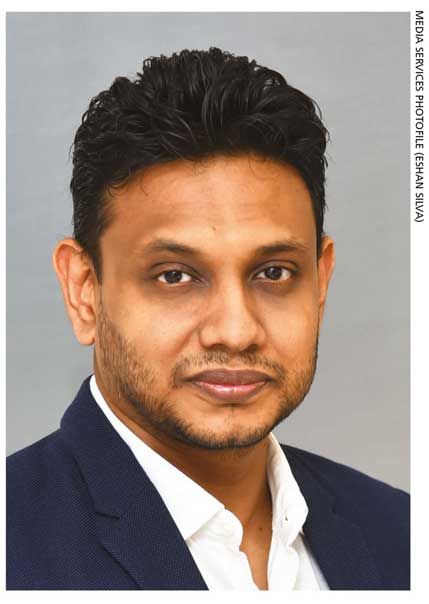
TECH IN THE DRIVING SEAT
Asanka Bimal Rajasinghe traces rapid acceleration in technology adoption
Compiled by Yamini Sequeira
 Q: How important is the tech agility of businesses and what did the pandemic do to drive this lesson home?
Q: How important is the tech agility of businesses and what did the pandemic do to drive this lesson home?
A: From being an enabler of business to its driver, technology has come a long way. Typically, IT tools such as ERP and CRM systems were meant to support operations, rather than drive business.
As always, a few trend-setters stepped up and ventured out to leverage on the agility that can be driven through IT. In banking for example, there were mobile apps, payment gateways and internet banking. However, that wasn’t the regular model of banking.
The pandemic led to a significant shift from the traditional method where services were provided within the service provider’s environment to where the customer is. To do this, organisations had to adopt agile methodologies and digital channels, which have resulted in the current trends.
Q: And where is Sri Lanka positioned in terms of advanced digitalisation?
A: Critical digital infrastructure can be divided into two categories – viz. the economy and business. The government has been in discussions with several digital enablers to drive a digitalised economy business milieu. Digitalising the data of citizens and digital state services are fundamental elements of this process.
An essential element that will benefit everyone is the creation of a digital identity for citizens since it will be useful in numerable state and private sector entities.
In business, there’s a major drive in both the financial services and telecommunications industries to have their critical digital infrastructure in place. Most of these organisations have either enabled themselves or are in the process of enabling their digital infrastructure.
As a leading ICT provider in the country, we’ve seen waves of digitalisation over the past 15 years that have driven demand. Taking the initiative and driving it forward is the key factor. The rest will fall into place.
Q: Could you provide a snapshot of existing, new and emerging services that constitute Sri Lanka’s ICT sector?
A: I would refer to both business process automation and Industry 4.0. The existing automation technology, which drove certain significant digitalisation initiatives, has seen rapid growth brought on by post-pandemic behaviour; for example, machine learning and AI, along with the concept of robotic process automation technology.
This transformative technology has reduced the time involved in manual processes, and increased efficiency and effectiveness. It has also provided organisations with an opportunity to redeploy and reorganise their skills, and focus on their core business while technology takes care of managing the processes, procedures and workloads.
There’s also a rise in IoT but sustainability will depend on how we adopt case-based solutions in a broader Industry 4.0 framework.
Q: Are any other potential avenues being explored?
A: The ICT sector in Sri Lanka has a few major areas.
Predominantly, the application builders – large, medium and small software houses, which carry out product development for their own use or for global organisations; telcos and banks that enable digital services for the public; and entities that implement and provide services for enterprises, as well as the government.
The work from home concept has opened our potential to the world.
Yet another emerging avenue is doing business using virtual channels, and enabling us to get in touch directly with businesses and customers outside Sri Lanka. This offers a great opportunity for Sri Lanka to take its solutions to the global arena.
Q: Is the dream to make Sri Lanka an ICT hub possible, in your view?
A: The term ‘ICT hub’ doesn’t have a uniform definition. Considering the demographics of our island, building an industry where you need millions of ICT professionals won’t be a viable option.
However, extending the regional ICT footprint to Sri Lanka is a possibility.
The evolution of Sri Lanka’s apparel industry since the 1980s is a prime example of how a volume-based industry has progressed to become a value centric business while creating world-class brands and professionals.
Sri Lankans continuously come up with world-class products and solutions. Without restricting ourselves to Sri Lanka or the region therefore, we must aggressively go global with our ‘Made in Sri Lanka’ identity.
Q: Does Sri Lanka have the necessary tech skilled workforce to do so?
A: Since technology is evolving rapidly, businesses that are driving its development should take ownership for building capacity both at the professional and academic level.
Complementing this, academics too need to be a part of the professional circle so that supply and demand can be matched – or at least, the gap narrowed. And the focus should be more on quantity, rather than quality alone.
In Sri Lanka today, any organisation will admit that attracting a quality workforce is a problem. We need to build capacity in larger volumes, which will result in creating a skilled pool of resources.
Otherwise, organisations will run out of people – because Sri Lankan talent is recognised and valued the world over.





